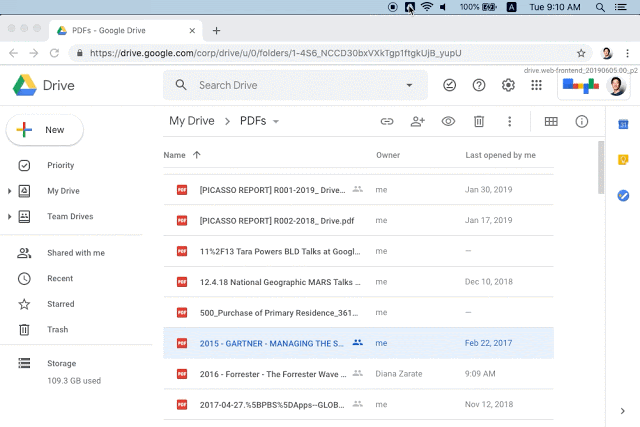Google Drive Testing Full Offline Storage: How to Try It
You can now store more files offline, but only if you're using the Chrome browser.

Update: Google Drive just got a huge upgrade — and it's about time.
If you're someone who likes to save your documents locally and not necessarily keep everything in the cloud, Google Drive is testing a new feature to help you do just that.
In a blog post this week, Google said that its G Suite users can apply to be part of a beta test that would let them save PDFs, images, Microsoft Office files, and other documents not saved in a Google format to their local machines. The feature was previously available on Google's Docs, Slides, and Sheets files, but is now being added to Microsoft Office and other formats.

However, before you jump to your Google Drive to try out the feature, keep in mind that G Suite requirement, which means that this feature is limited to business customers (at least at first). You'll also need to be using the Chrome browser.
These are all of the conditions that need to be met in order to test out Google Drive offline storage:
- The domain enables Drive File Stream use/installation (and is therefore a G Suite domain).
- Admins have enabled offline for the domain / device using the admin console settings.
- End users are signed into Chrome, and use Drive File Stream with the accounts associated to the whitelisted domain
- End users have offline enabled from within Drive or Docs settings.
If you're interested in joining the beta, you can do so by clicking here and applying. If you're accepted, you'll need to sign in to your Google Drive, choose the files you want to save offline, right click on them, and mark them as "Make available offline." You'll then be able to download them to your local machine.
Google is accepting applications now.
Get instant access to breaking news, the hottest reviews, great deals and helpful tips.
Don Reisinger is CEO and founder of D2 Tech Agency. A communications strategist, consultant, and copywriter, Don has also written for many leading technology and business publications including CNET, Fortune Magazine, The New York Times, Forbes, Computerworld, Digital Trends, TechCrunch and Slashgear. He has also written for Tom's Guide for many years, contributing hundreds of articles on everything from phones to games to streaming and smart home.
